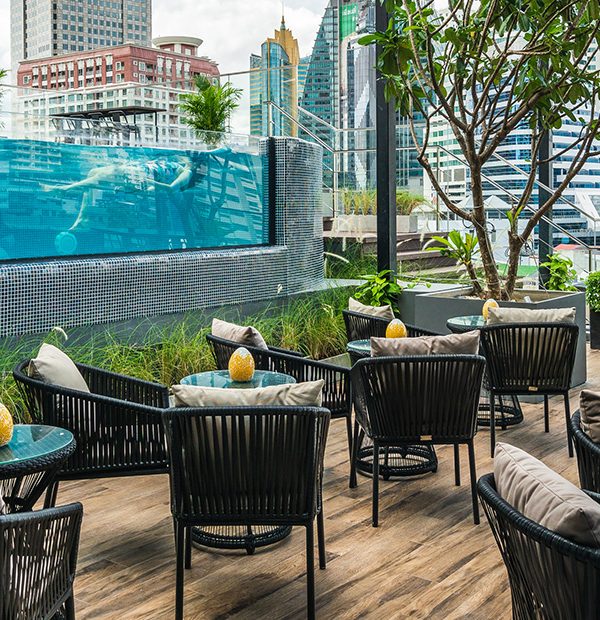Luxury redefined
The concept of luxury used to be centered around people that could afford to play polo, buy art and expensive cars, eat caviar and drink champagne. It implied an aspirational, enviable and joyful life without worries.
The luxury brands that were serving these demanding high-end customers were able to deliver high-spec products with impeccable and constant service. Then things changed. It became possible to buy just a little piece of the glamorous life. People from a growing middle class were able to buy a Guerlain perfume, a Louis Vuitton Wallet or a pair of Armani Sun Shades. They had upwardly mobile ambitions and these purchases became their status symbols. Thus, the luxury market started to grow – and has been growing ever since.
To put this into numbers, the aggregate net luxury goods sales of the top 100 luxury goods companies is US$217 billion[1].
The world continues to change rapidly, and we’re now seeing an erosion of the traditional customer base. Wealthy clientele are more reclusive and harder to target as they are on a quest for different ways of spending.
This is the first in a series of stories about the changes in society that are affecting luxury markets. It will reflect on digital luxury, shy luxury, and accessible luxury.
We start with a focus on sustainability and ethics, or responsible authentic luxury.How do luxury markets relate to this, taking changing expectations and aspirations into account? What was the ‘old’ deluxe paradigm and how are sustainability and ethics being embraced today?
Transforming Worlds – Transforming Markets
Times are always changing but we are now in a period of transformation that is affecting societal values and attitudes so profoundly that new expressions of luxury are emerging.
Three main drivers[2] are changing the luxury market and paving the way for responsible authentic luxury.
GLO-CAL INFUSIONS towards global meaningful luxury
Historically, the luxury goods industry has worked on a ‘West versus the rest’ basis. Italy was leading in terms of number of companies, and France had the highest share of sales. Recently, Asia, the Middle East, Latin America and Africa have been taking off in a big way.
These emerging markets are of such magnitude that luxury brands are moving into these markets. In return, these regions are creating luxury brands of their own – brands that are finding their place on the global stage; shifting the balance to an ‘East versus the rest’ scenario.
Prime examples are the popularity of South Korean cosmetics and green tea scents in perfumery – both of which have had a meteoric rise in the last decade. Although patterns of luxury pattern in Eastern regions are built on the traditional ostentatious paradigm of the West, they adapt quickly by adopting the more meaningful Western luxury.
What arises is a mix-and-match luxury, where East and West both play their part in forging future patterns of luxury.
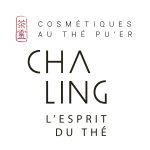 To preserve the extraordinary ecosystem of the green lung of China, Guerlains’ CEO Laurent Boillot created Cha Ling. This Sino-French cosmetics house combines ethics and esthetics, luxury and sustainable development. Inspired by an ecological dream and made with rare Pu’Er tea from China, Cha Ling embodies the Chinese tradition as a source of inspiration for a new approach to beauty.
To preserve the extraordinary ecosystem of the green lung of China, Guerlains’ CEO Laurent Boillot created Cha Ling. This Sino-French cosmetics house combines ethics and esthetics, luxury and sustainable development. Inspired by an ecological dream and made with rare Pu’Er tea from China, Cha Ling embodies the Chinese tradition as a source of inspiration for a new approach to beauty.
THE DIGITAL LANDSCAPE between transparency and exclusivity
Digitization is ubiquitous in today’s society. The previously remote and conservative luxury industry that once thrived on exclusivity and outstanding face-to-face purchase experiences has had no choice but to evolve and maintain a digital presence, while also innovating to meet its tech savvy clientele’s expectations.
The industry has successfully changed gear to give access to all and to connect with their customers in the digital world. In 2018, Calvin Klein went so far as to abandon print publishing in favor of purely digital communication.
“Sectors of fashion and beauty cannot remove rare raw materials anymore without worrying about the biodiversity collapse or animal pain. At the least mistake, information move on social media and brand image can suffer from it.” Cécile Lochard, Head of Sustainability Communications at Guerlain in Luxury and sustainable development: the new alliance.
A notable impact of digitization is transparency Brands and businesses that use smoke and mirrors to greenwash their products or be vague or misleading about ingredients will be found out.
Digital media platforms expose the true colors of a brand, forcing them to be as coherent as possible in their external stories and internal operations. This can feel like a threat but if executed well, this new level of transparency can help to reinforce a brand and elevate it beyond its competitors.
Andy Hart, Head of Diamond Supply for Tiffany, explains his motivation for building a responsible brand. “I just ask myself, if I had to pull back the curtain on our factories, would I want our customers to see what’s there?”
A lot of brands have adopted the practice of baring all with micro-sites that show behind-the-scenes features, movies of the ingredients, production places and more. We’re seeing a significant shift from a story-telling to a story-proving era.
FUTURE TARGETS addressing a conscious clientele
As more millennials enter the work force, they make up a greater share of the market for high-end goods.
Customer preferences and tastes are led by millennials and the generations following them. They want to be served and rewarded with high quality purchases and a purpose driven narrative[3].
We’re seeing a collective backlash against ostentatious spending, with preferences shifting to products that are social, accessible and supportive. Millennials feel increasingly anxious about how their moral worth is perceived, resulting in a cut back on buying bling.
Their idea of status is not shaped by luxurious and exclusive possessions, but by a commitment to freedom of expression, unique experiences and technology that matches their busy lifestyles. It has been well documented that millennials are more interested in spending their money on experiences such as travel, cultural activities and outdoor pursuits, rather than big ticket items such as luxury cars.
High-yield clients expect their luxury suppliers to embrace sustainability and ethical topics. To continue growth, luxury players must integrate and embrace these paradigm shifts, authentically, not just superficially.
A BRIGHT FUTURE FOR RESPONSIBLE AUTHENTIC LUXURY
The societal transformations explored above, combined with a growing need and desire for meaning[4], results in a reformed notion of premium – paradoxically linking luxury to societal responsibility. This extends through to all levels, from ethical labor practices to sustainable materials.
Abundance and ostentation as single distinction or status symbol is no longer valid. Meaning is the new abundance; a significant marker that can be become a relevant brand and/or corporate asset.
This doesn’t mean that traditional values will be overshadowed by the meaningful values of future generations. Luxury brands and businesses need to adapt to the new values and apply them to their existing offerings that deliver on aspiration, aesthetics, delight and emotional benefits beyond the functional.
We are living in the ‘Era of AND’ and this seems applicable to the luxury business too. The challenge for brands is to satisfy their luxury clientele’s desire for ‘meaning AND indulgence’. This calls for renewed narratives that refer to a deep emotional sense of affluence while having a positive impact – thus linking the emotional to a social benefit.
Some classic luxury brands have remained very traditional, believing that consistency and a strong brand identity are enough to drive success. That is not the case. Fortunately, there are others that are catching up, and starting to foster contemporary values such as sustainability, ethics and social responsibility.
Just ahead of its 2019 Métiers d’Art show in New York’s Metropolitan Museum of Art, Chanel declared it will “no longer use exotic skins in [its] future creations”. The decision was driven by the fact that it is becoming increasingly difficult to source skins that meet the house’s quality standards, as well as growing ethical consumer attitudes [5].How can luxury brands reposition themselves to embrace these changes and build responsible luxury into their narrative? The key is to be authentic. Brands need to genuinely implement sustainability and environmentally-friendly models into their practice from the ground up – before they start to create a buzz around it.
 Oskar Metsavaht is the founder of Osklen, one of Brazil’s most iconic fashion brands. He is internationally renowned as one of the forerunners of the ‘new luxury’ concept that advocates conscious fashion and sustainable luxury. According to him, a brand is identified as luxurious if it involves so-called noble values. These, however, imply social concern and the preservation of natural resources for the next generations. Or as he states: design, art and sustainability compound the universe of Osklen that represents the vision of “new luxury” = ethics + aesthetics. (stateoffashion.org/en/about/osklen-experiments)
Oskar Metsavaht is the founder of Osklen, one of Brazil’s most iconic fashion brands. He is internationally renowned as one of the forerunners of the ‘new luxury’ concept that advocates conscious fashion and sustainable luxury. According to him, a brand is identified as luxurious if it involves so-called noble values. These, however, imply social concern and the preservation of natural resources for the next generations. Or as he states: design, art and sustainability compound the universe of Osklen that represents the vision of “new luxury” = ethics + aesthetics. (stateoffashion.org/en/about/osklen-experiments)
Responsible Sustainable Luxury
Contemporary luxury customers expect brands to be authentic, thus closing the saying-doing gap. In times of transparency through digital platforms, communication cannot be a hoax or whitewash. Of course, brands have still a long way to go but there is a ‘first step’ tolerance among customers if they see behavior moving in the right direction. Wasteful practices like Burberry’s, that destroyed 30% of their collection by burning it, are not accepted anymore. They have a clear negative impact on brand equity and turnover. We’re at a stage where a change from a linear to a circular market must be set in motion.
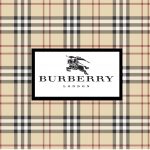 Online 2nd hand clothing store ThredUp published an open letter to Burberry, criticizing the British brand’s stance on destroying apparel.
Online 2nd hand clothing store ThredUp published an open letter to Burberry, criticizing the British brand’s stance on destroying apparel.
It followed Burberry’s July 2018 announcements that USD 37 million of apparel has been burned to conserve the luxury label’s exclusivity.
Asia’s first single-use plastic-free hotel is in Bangkok. In the Akyra TAS Sukhumvit Hotel guests are offered stainless steel water bottles, which can be refilled at water dispensers located on every floor. Bathroom amenities are provided in locally-manufactured pottery containers, and biodegradable plastic bags are used in all bins. The Akyra Hotel Group, pledges to become plastic free by 2020.

Luxury brands shouldn’t limit themselves to using organic materials but should be open to production methods and chains that are based on re-using, recycling or reducing. In doing so, brands start to move from ego-centric to an eco-centric approach, thus attracting modern affluent clients. These clients like to buy products that reflect their ethics, even better if proclaimed so by a brand’s visionary spokesperson or creative lead, such as Stella McCartney, Oskar Metsavaht or Elon Musk. These brand owners themselves are the most authentic brand ambassadors as they share the sustainability stance with their clients. The clientele is more interested in the meaning of the purchase from these influencers than the purposeless enchanting escapist act of indulgence.
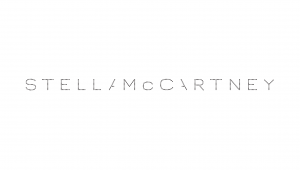 STELLA McCARTNEY is a frontrunner when it comes to sustainable fashion. She is a firm supporter of animal rights and is particularly known for her use of vegetarian and animal-free alternatives in her work.
STELLA McCARTNEY is a frontrunner when it comes to sustainable fashion. She is a firm supporter of animal rights and is particularly known for her use of vegetarian and animal-free alternatives in her work.
She is now partnering with Bolt Threads to add further luxury sustainable fabrics to the fashion brand’s collection. The biotech company uses a clean manufacturing process to create material from natural proteins such as a vegan, yeast-based silk.
Thus, implementing the McCartney Brand Mission: We are agents of change.
Responsible Ethical Luxury
The ecological and environmental aspects of the transformations in the luxury market are not the only relevant changes happening today. Ethical aspects that relate to business principles are also on the rise and need to be incorporated into brand strategies and company policies. These brand strategies include purposes that are beyond marketing.
 Triwa (Swedish fashion brand) partnered with Humanium Metal (specializes in the distribution of metals sourced from illegal firearms) creating a line of watches. The revenues were used to generate financial resources for communities affected by war and conflict, as well as support for victims of armed violence.
Triwa (Swedish fashion brand) partnered with Humanium Metal (specializes in the distribution of metals sourced from illegal firearms) creating a line of watches. The revenues were used to generate financial resources for communities affected by war and conflict, as well as support for victims of armed violence.
Chopard, for instance, has made a big effort to ensure they are using ethical gold for their jewelry, as demonstrated in ‘The Journey to Sustainable Luxury’ on the 2018 BASEL WORLD trade show[6]. Meanwhile, international diamond company De Beers announced that the first 100 diamonds had been tracked from the mine to retail stores on its Tracr platform. Blockchain technology ensures the diamonds are authentic, conflict-free and natural.
A trend that’s set to stay
Responsible Authentic Luxury is not just a hype to increase sales or a trend that will fade next season. It’s here for the long-haul. Luxury is still tied to excellence, aesthetics, aspiration and emotional benefits. The challenge for luxury brands is to solve the paradox between pleasure AND meaning, from production to final product.
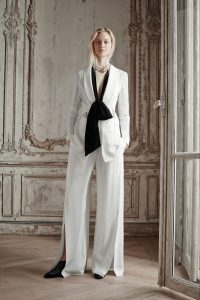
US-based luxury fashion label Maiyet recently opened a concept store featuring fine jewelry, beauty, home and lifestyle products created using sustainable processes. The ‘Maiyet Collective‘ – located in London – is open for two days each month and includes product launches, workshops, founder talks, book signings, limited edition releases, exhibitions, and performance art.
Millennials make up 30 percent of all luxury shoppers and this figure is still rising to an estimated 45 percent by 2025[7]. They generated 85 percent of the global luxury growth in 2017[8], so it is a strategic necessity for luxury businesses to adapt their values and pleasure principles to sustain themselves.
The luxury market needs to genuinely incorporate sustainability and ethics into its brand strategies, tactics and operations, if it wants to stay relevant. The functional and emotional benefits of beautiful products and experiences need to be balanced with authentic social benefits.
The article is from our great partner Cosight in Paris. We have worked with Cosight on the very successful BMW i launch to bring electro mobility into awareness.
Cosight is an international innovation agency based in Paris, France. They are specialists in understanding people’s change & translating it into corporate innovation.
To get in contact with Cosight:
Christine de Panafieu or Karsten van der Donk
Cosight | the meaning management company
B. Amsterdam, Johan Huizingalaan 763a, Amsterdam
office (amsterdam) +31 20 820 36 81
office (paris) +33 1 49 23 80 90 | +33 6 20 89 69 72
skype: christinewoeslerdepanafieu
www.cosight.com
Cosight | the meaning management company
office (amsterdam) +31 20 820 36 81 | mobile +31 626 320 116
skype: karstenvdd
[1] Global Powers of Luxury Goods 2018 | Deloitte.
[2] Cutting Edges Detector 2018, Cosight | www.cosight.com
[3] Cutting Edges Detector 2018, Cosight | www.cosight.com
[4] Cosights’ megatrend meaningful mankind consists of sustainability, ethics, humanness, spirituality and nature
[5] https://www.vogue.co.uk/article/chanel-to-stop-use-of-exotic-skins-and-fur
[6] CHOPARD defines ethical gold as coming from either artisanal small-scale mines that participate in the Swiss Better Gold Association’s (SBGA) “Fairmined” and “Fairtrade” programs; or gold sourced with the Responsible Jewellery Council’s “Chain of Custody” certification through Chopard’s partnership with RJC-certified refineries.
[7] https://luxe.digital
[8] Luxury Goods Worldwide Market Study. Millennial state of mind: the tailwind behind consumer behaviors and winning strategies, Claudia d’Arpizio and Federica Levato, Bain & Company, October 2017.

